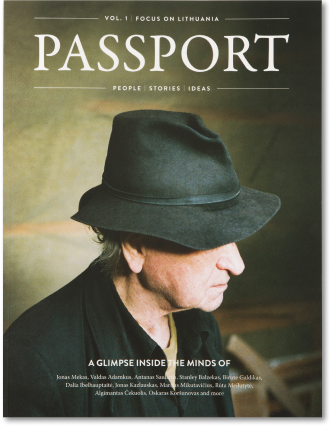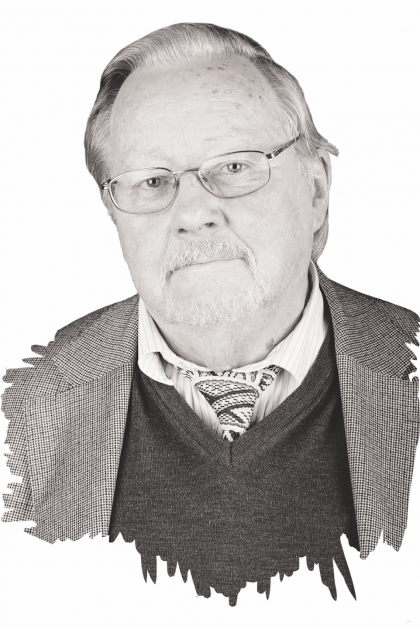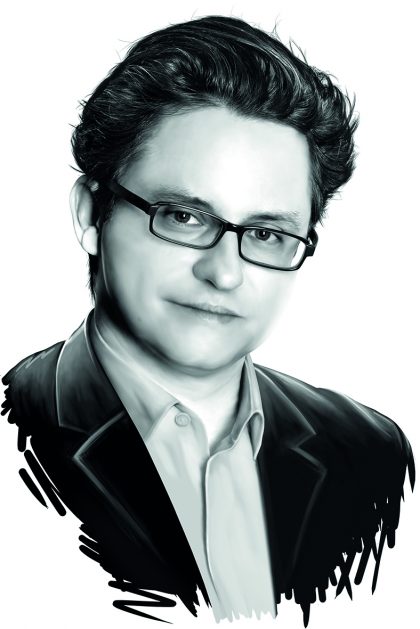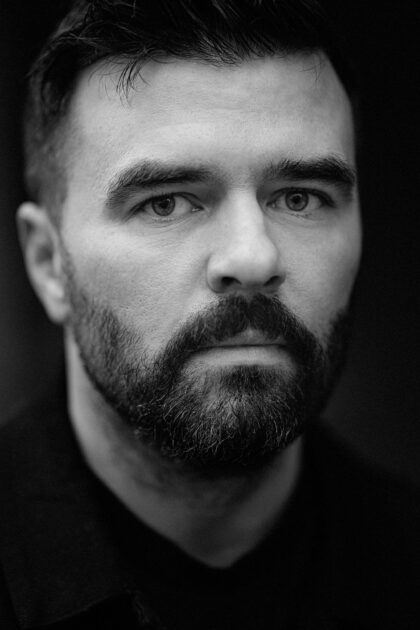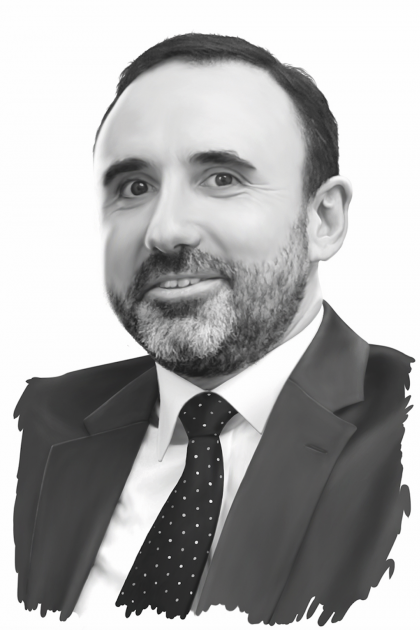Giedrius Subačius
Professor and Endowed Chair in Lithuanian Studies, University of Illinois at Chicago

Simultaneously, however, new forms appear, and the language continues functioning with these newly acquired parts.
Giedrius Subačius
Sometimes people ask how we will speak in 500 years. It is a linguist’s task, then, to predict changes that may occur in the language of the future.
We usually credit Homo sapiens with the birth of spoken human language. Homo sapiens became anatomically modern about 200,000 years ago, and full behavioral modernity, including language, happened for us about 50,000 years ago. What were languages like then? The rapidity of language change prevents the reconstruction of these distant phases of linguistic development, because languages only retain traceable similarities with their parent language for no longer than 5,000 to 7,000 years. For this reason, we may assume that Homo sapiens modified its first hypothetical languages into their next unidentifiable linguistic iterations at least 10 times during the last 50,000 years. According to researchers at Ethnologue, a comprehensive source for linguistic research information, we developed the plethora that is now 7,106 modern spoken languages out of those few initial languages.
Some languages change more rapidly than others. For example, Old English existed from the middle of the 5th century to the middle of the 11th, but no native English speaker today would be able to understand Old English without special training. In effect, one can argue that Old English is an entirely different language than contemporary English. Old English had many inflections and, structurally, was more similar to Lithuanian than to its own contemporary counterpart. In fact, some etymologists argue that the vocabulary of contemporary English consists of approximately 99 percent borrowings from other languages and only one percent inherited words. English changed comparatively swiftly, as the life cycle of Old English was merely 600 years. Modern English has now lasted for approximately 600 years as well (there was Middle English in the interim for 450 years). Although all three of these languages are tagged as “English,” they are mostly mutually unintelligible. Scholars, however, can easily see their relationship, and simply retaining the name “English” is the most important factor in preserving its linguistic identity.
Changes in the Lithuanian language occurred somewhat more slowly than in English. We often speak about its archaic quality, which means it contains features that characterize both Lithuanian and its Baltic parent language, features that have remained unchanged for long periods of time. Lithuanian is presumed to have appeared during the 5th and 6th centuries AD (1.6 to 1.5 thousand years ago), when it separated from Latvian, another Eastern Baltic language. We don’t know how well the Lithuanians of the 6th century AD would have been understood today, but it is certain that the mutual intelligibility would be of a much higher level than in the case of the old and new English languages.
In a sense, the continuous process of language change might be perceived as the constant disappearance of a language as it melts down its old forms. Simultaneously, however, new forms appear, and the language continues functioning with these newly acquired parts. In that sense, both English and Lithuanian are dying and being reborn every day. Except for vocabulary, however, people often do not notice language change, since the concentration of tiny phonetic, morphological, and syntactic substitutions only become obvious after periods longer than the human lifespan. Linguistic changes tend to appear in ways no one can foretell, so the metamorphosis of language is always unexpected.
We often think of language as the symbol of our nation and our identity, but in such cases, any changes in vocabulary, grammar, derivation, and style have no influence on our language perception. Whatever the alteration, it occurs under the same label of either “English” or “Lithuanian.”
Researchers at Ethnologue have developed a methodology to judge the vitality of a language. The most important factors that affect the path of language continuity are the number of language users, the number and nature of the functions for which the language is used, and the transmission of the language to new generations. In terms of language functions and their maturity, Lithuanian is one of the 100 (0.7 percent) best-established world languages, of which only six are considered international languages (English is one of them). These 100 languages are used in educational systems, media, and governmental institutions more than the remaining 7,000 languages. Even though Lithuanian has only about three million speakers, Ethnologue considers it one of the 393 (5.5 per cent) most commonly spoken world languages.
Barring some unforeseen catastrophe, there is no reason to believe that English or Lithuanian will disappear in the next 100 years. The languages will be somewhat changed and different, and the people reading our texts in 2116 will smile at our words and expressions and consider some of them strange, funny, and awkward, but nonetheless, they will certainly label what they are reading as “English” or “Lithuanian.” No prediction, however, is ready for the year 2516.

